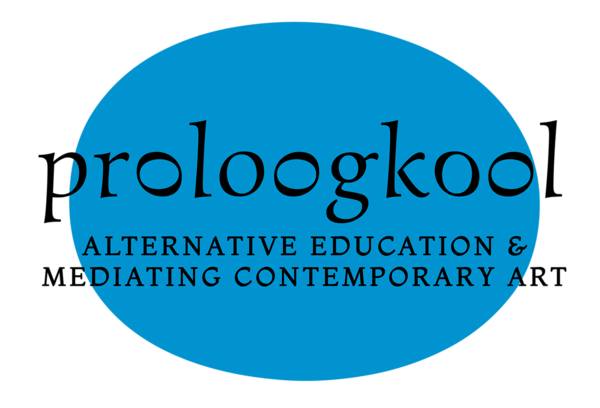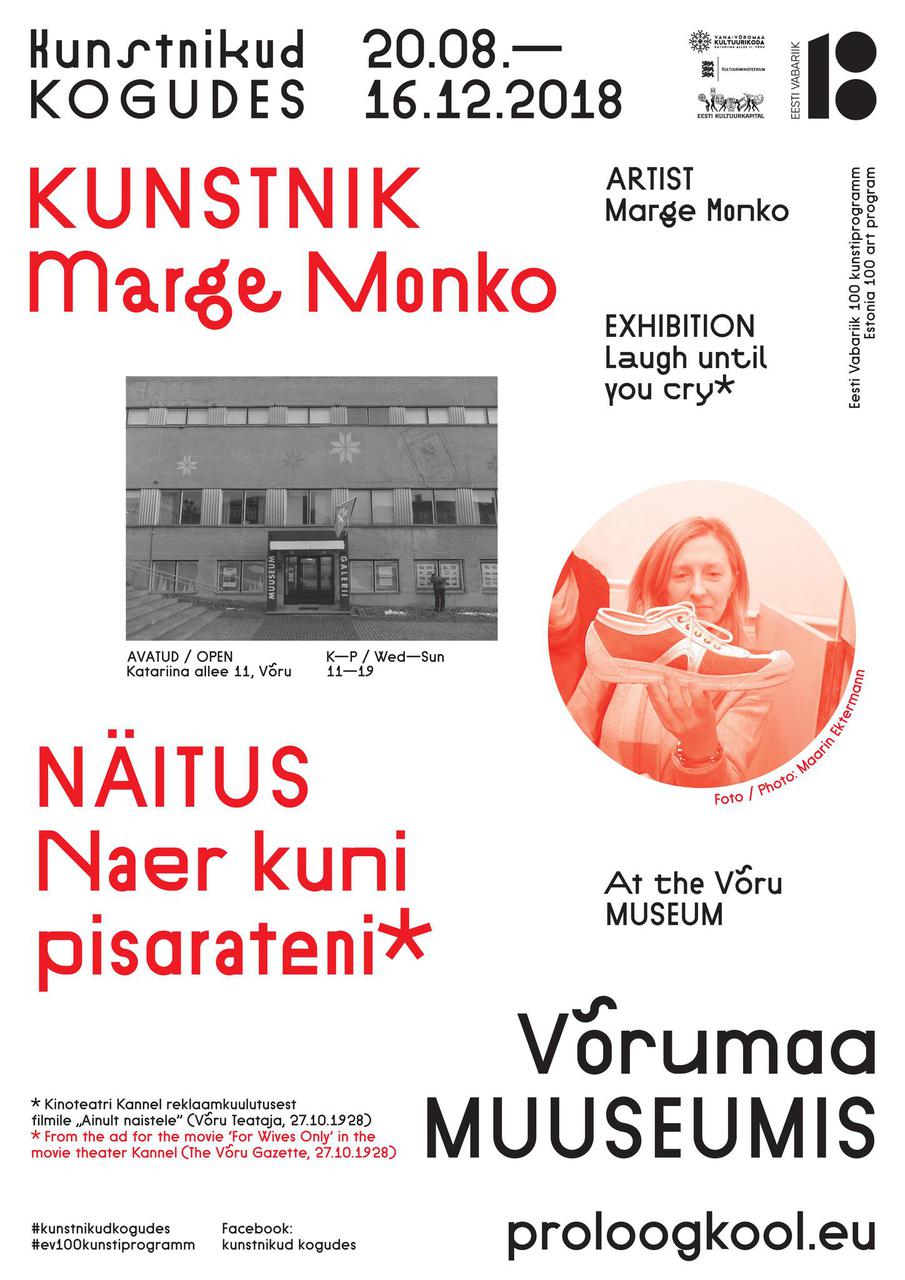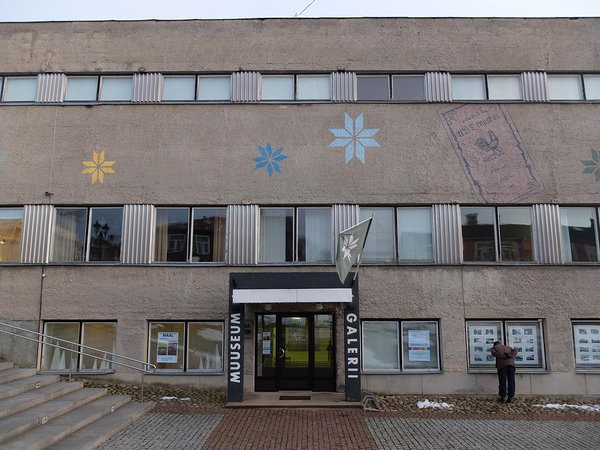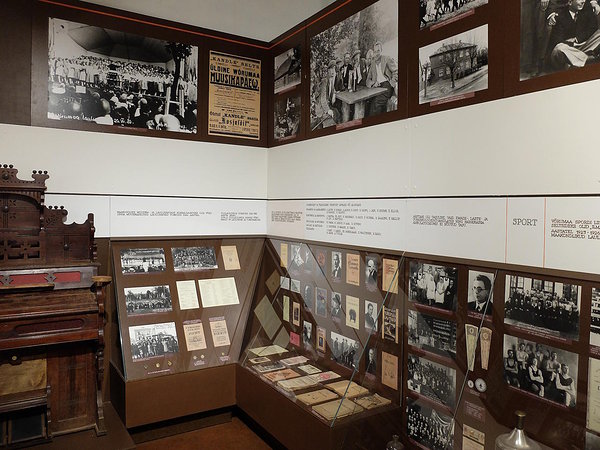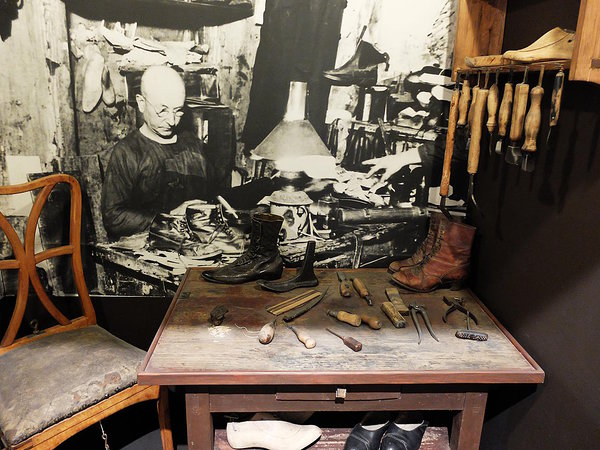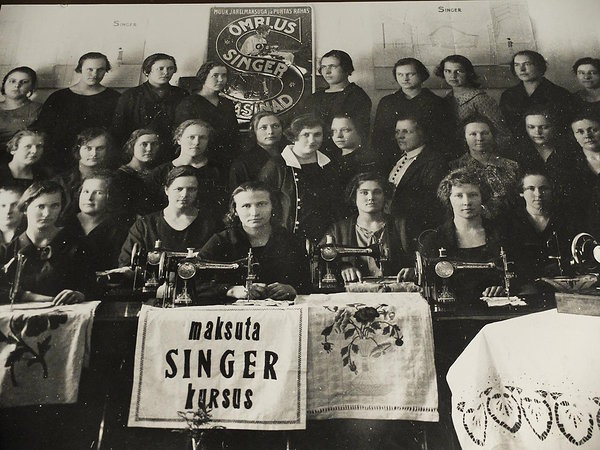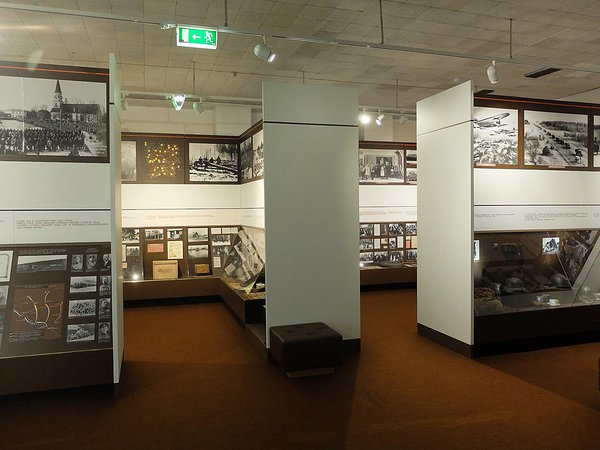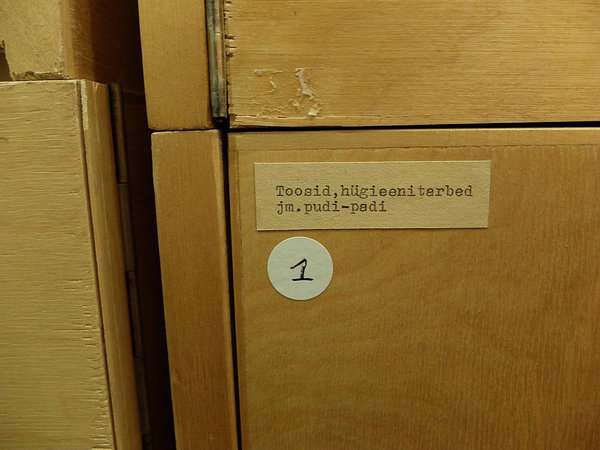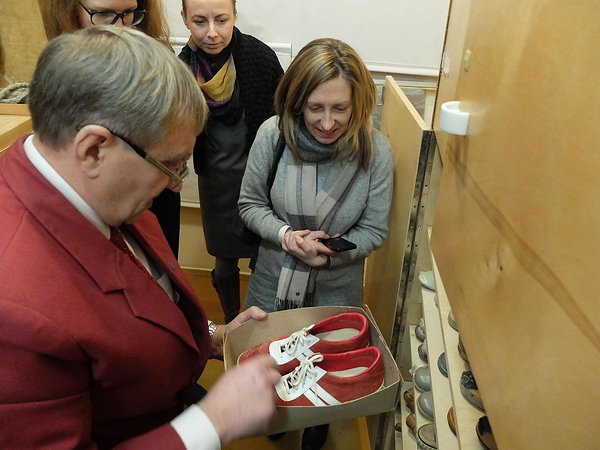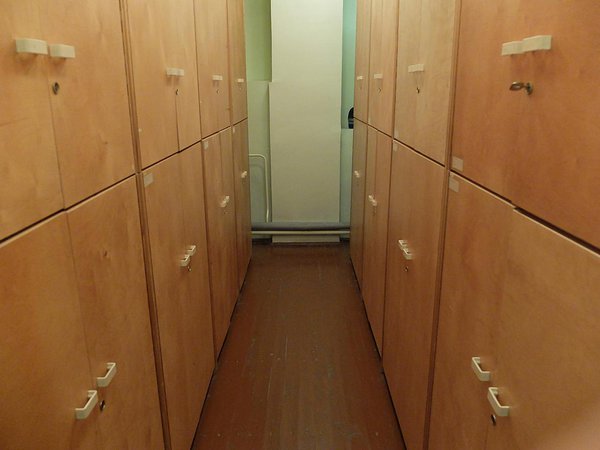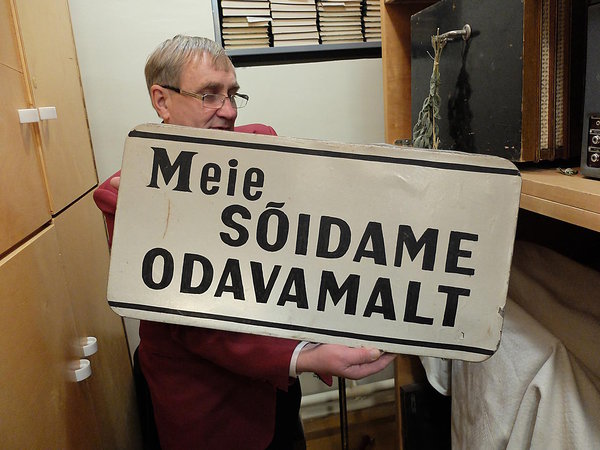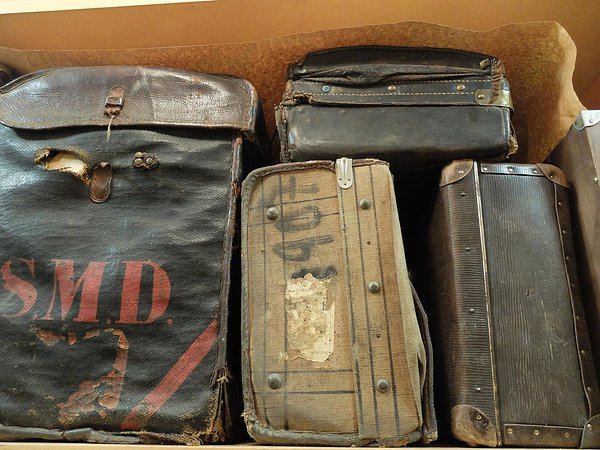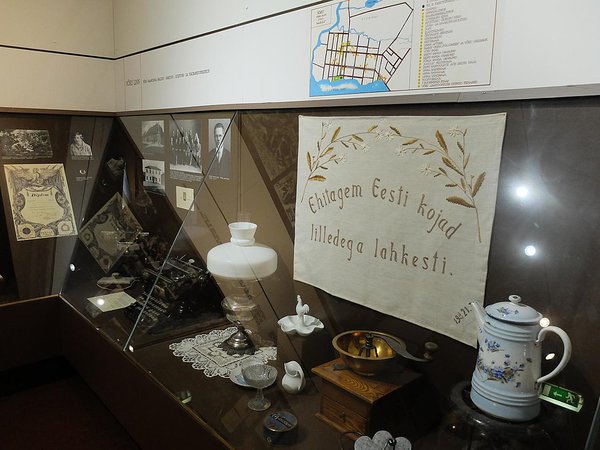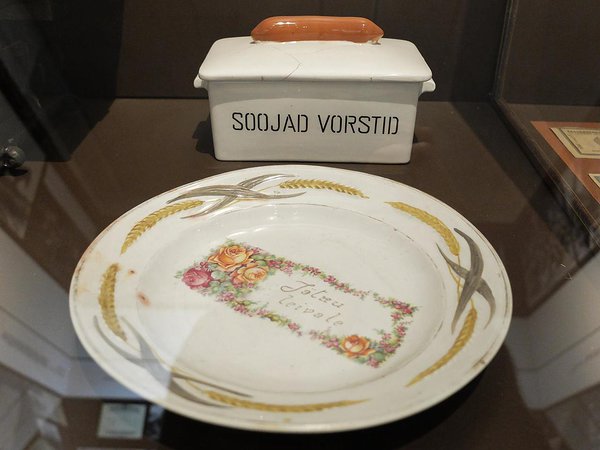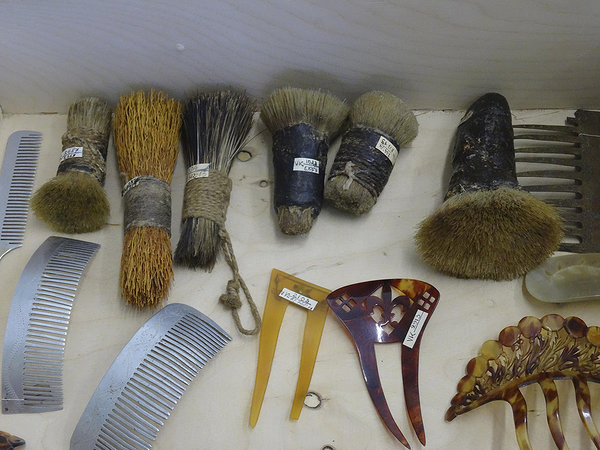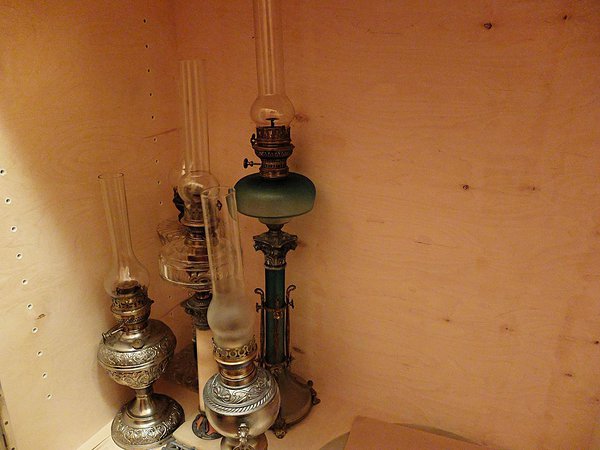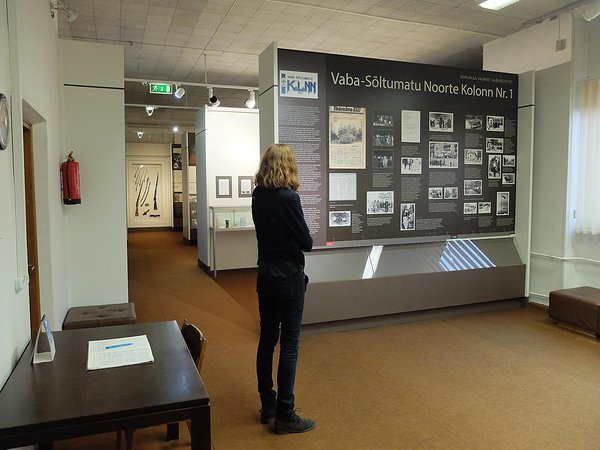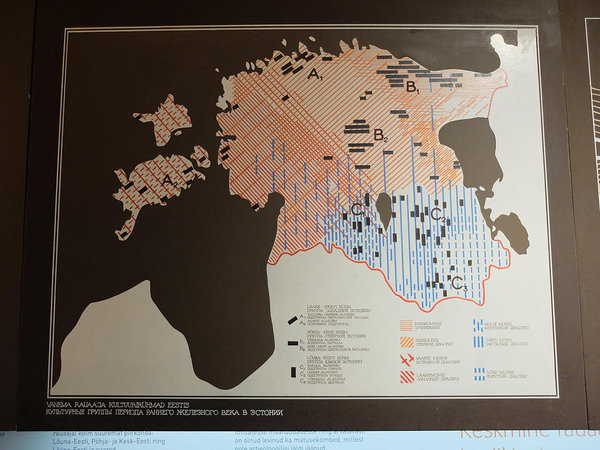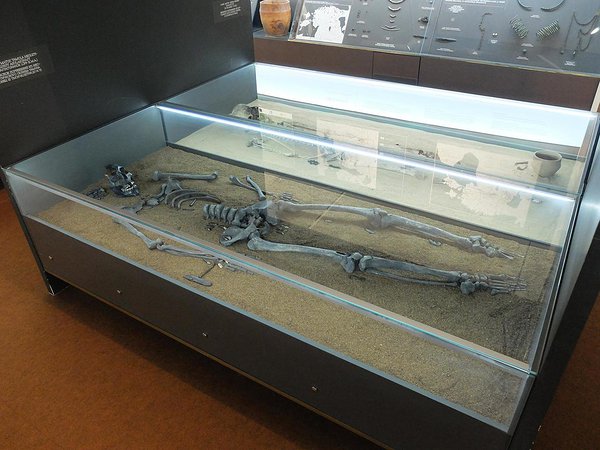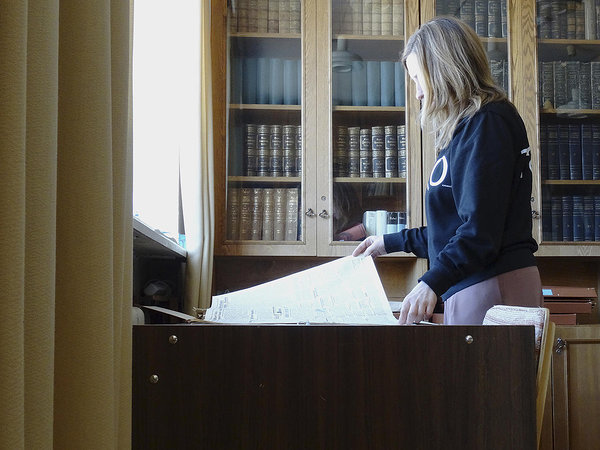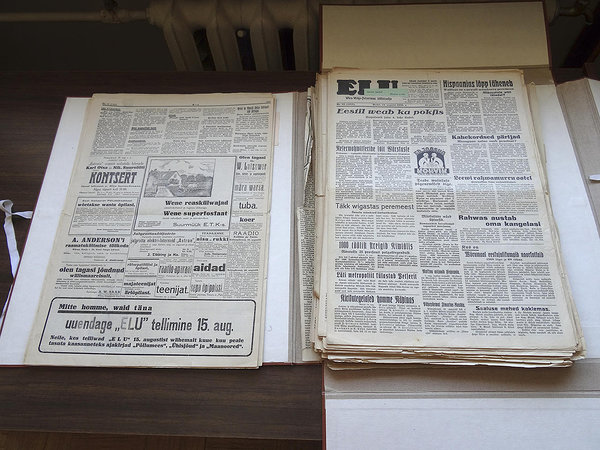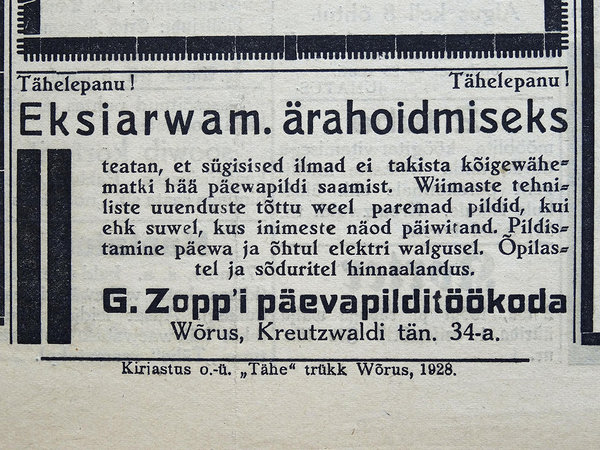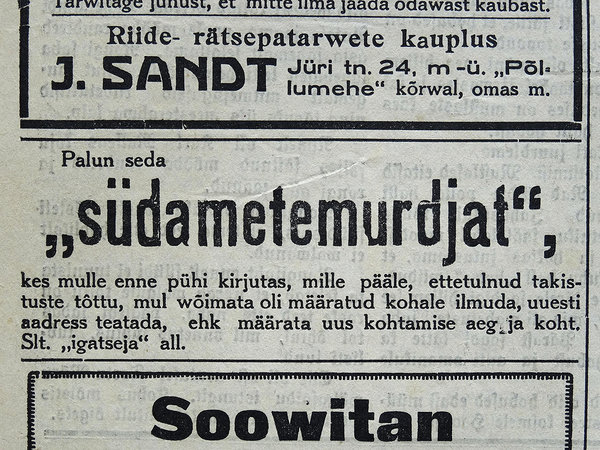Marge Monko + Võru Museum
"Laugh until you cry*"
20.08.–16.12.2018
Marge Monko’s addition to the museum’s permanent exhibition, which is partially still in place after the project has ended, deals with leisure time and entertainment in Võru in the 1920s and 1930s. To offer an alternative to romantic nationalist narratives usually associated with this era, the artist has, somewhat speculatively, put Võru in the context of cosmopolitan trends of that period. The display is divided into four sub-themes: fashion, entertainment, sports and cars; and you can see photos, objects from the museum’s collection and materials from newspapers and magazines of the time. During the Artists in Collections project, the museum guests were greeted by a neon sign that was placed above the entrance to the building; in its design, the artist had used elements of both Võru County coat of arms as well as art deco style.
The decades between the two World Wars marked a big upheaval in the Western world — modernization. In the “roaring 20s”, more and more cars could be seen on the streets, the recent war atrocities could be forgotten with the help of movies, radio and jazz, and people were taken with dance styles like Charleston and swing. Women’s social position improved, and many battles fought in the name of gender equality bore fruit. In 1918, women in Estonia gained the right to vote and in the 1920s there were 31 active women’s organizations in Estonia. The representation of women in politics was still scarce; for example, there were only three women in the 2nd Riigikogu (Parliament of Estonia) in 1923—1926.
In 1922, there were 5,077 habitants in Võru (almost twice as much as at the end of the 19th century) and the trends of the world’s big cities reached there. Based on the newspaper Wõru Teataja, it’s safe to say that in the 2nd half of 1920s and at the beginning of the 1930s, new coffee places and businesses were constantly being opened in town. The main places to spend time at were Kannel Society House, which was home to a theatre company, a diner and a cinema, and the Mars movie theatre that showed European and Hollywood movies. The numerous ads for hair salons, fashion companies and car dealers in the local newspaper give an idea of a wealthy urban bourgeoisie and increased consumption. But at the same time, new authoritarian forces were beginning to emerge in the political sphere...
* From the ad for the movie ‘For Women Only’ in the movie theater Kannel (Wõru Teataja, 27 October 1928)
Marge Monko (1976) studied Photography in the Estonian Academy of Arts and completed additional courses in University of Applied Arts Vienna. Her oeuvre is influenced by feminism, psychoanalysis and theory of visual culture, focusing on topics such as the portrayal of women, corporeality, (consumer) desire and love in today’s society of market economy. The media used by Monko vary from documentary to theatre, from photo to video and installation. Marge Monko won the Henkel Art Award for Central and Eastern Europe in 2012; in 2013—2015, she participated in a studio programme in HISK (Higher Institute for Contemporary Art) in Belgium and in 2015 was in residency in ISCP (International Studio & Curatorial Program) in New York. She was one of the first artists to receive the artist’s salary in 2016, but decided to give it up after becoming head of the Department of Photography in the Estonian Academy of Arts in 2017. Monko has also received Annual Award of Cultural Endowment of Estonia (2018).
READ MORE
Marge Monko's residency took place during 08.–15.04.2018.
The residency was supported by Vana-Võrumaa Museum and we are also very grateful to Helve Alla for her help!
Public programme
17:00 Exhibition opening and artist’s talk17.10.2018
16:00–18:00 Workshop on making collages with 1920s—1930s newspaper ads for kids by Marge Monko
18:00 “Art in public space — corrections and provocations”, a talk by Maarin Ektermann
Thank you: Helve Alla, Tiia Haug, Jana Huul, Artur Ruusmaa, Rainer Kuuba
Gallery
